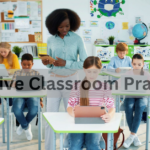Distance learning, also known as online education, has revolutionized the way we approach education and professional development. In an increasingly digital world, mastering effective distance learning strategies is crucial for both educators and students to ensure a successful and enriching educational experience. Below, we delve into the best practices and innovative approaches to optimize distance learning.
Understanding Distance Learning
Distance learning refers to the process of acquiring knowledge and skills through digital platforms, where students and instructors are not physically present in a traditional classroom setting. This mode of education leverages technology to deliver lessons, facilitate communication, and manage educational resources.
Key Components of Distance Learning
1. Reliable Technology and Infrastructure
A robust technological infrastructure is the backbone of effective distance learning. Ensuring reliable internet connectivity, appropriate software, and user-friendly learning management systems (LMS) is essential. Students and educators should have access to devices such as computers or tablets that support multimedia content and interactive applications.
2. Engaging and Interactive Content
To maintain students’ interest and enhance their learning experience, course materials should be engaging and interactive. Incorporating multimedia elements such as videos, animations, and quizzes can make lessons more dynamic. Gamification, which involves integrating game-like elements into the learning process, can also boost engagement and motivation.
3. Clear Communication Channels
Effective communication is critical in distance learning. Utilizing various communication tools like emails, discussion forums, video conferencing, and instant messaging can bridge the gap between instructors and students. Regular and clear communication helps address doubts, provide feedback, and foster a sense of community.
Best Practices for Students in Distance Learning
1. Establish a Dedicated Study Space
Creating a specific area for studying can help students focus and minimize distractions. This space should be quiet, well-lit, and equipped with all necessary materials and technology.
2. Develop a Study Schedule
Time management is crucial in distance learning. Students should develop a consistent study schedule that includes specific times for attending virtual classes, completing assignments, and self-study. Utilizing tools like digital calendars and reminders can help stay organized and meet deadlines.
3. Stay Active and Engaged
Active participation in virtual classes and discussions enhances learning. Students should engage with the course material, ask questions, and participate in group activities. This interaction not only aids understanding but also builds a sense of community among peers.
4. Utilize Available Resources
Many distance learning platforms offer a plethora of resources, including recorded lectures, reading materials, and supplementary tools. Students should take full advantage of these resources to reinforce their learning and gain a deeper understanding of the subject matter.
Best Practices for Educators in Distance Learning
1. Design Comprehensive and Flexible Curriculum
Creating a well-structured curriculum that is adaptable to online learning environments is essential. The curriculum should be divided into manageable modules with clear learning objectives. Flexibility in the curriculum allows for adjustments based on student feedback and learning progress.
2. Implement Diverse Teaching Methods
Different students have different learning styles. Employing a variety of teaching methods such as synchronous (live) and asynchronous (recorded) sessions, group projects, and individual assignments can cater to diverse learning preferences and enhance overall effectiveness.
3. Provide Prompt and Constructive Feedback
Feedback is vital for student growth and improvement. Educators should provide timely and constructive feedback on assignments and assessments. This feedback should be specific, highlighting both strengths and areas for improvement, to guide students towards better performance.
4. Foster an Inclusive and Supportive Environment
Creating an inclusive online learning environment where all students feel valued and supported is crucial. Educators should be approachable and offer assistance when needed, encouraging a collaborative and respectful atmosphere.
Overcoming Challenges in Distance Learning
1. Technical Difficulties
Technical issues can disrupt the learning process. Both students and educators should be familiar with troubleshooting basic technical problems and have access to technical support. Regular updates and maintenance of software and hardware can prevent many issues.
2. Motivation and Self-Discipline
Maintaining motivation and self-discipline can be challenging in a distance learning setup. Setting clear goals, breaking tasks into smaller steps, and rewarding oneself for accomplishments can help sustain motivation. Educators can support this by providing motivational content and regular check-ins.
3. Limited Social Interaction
The lack of physical interaction can lead to feelings of isolation. Encouraging virtual group work, peer-to-peer interaction, and social activities can mitigate this issue. Platforms like discussion forums and social media groups can also help maintain a sense of community.
4. Assessment Integrity
Ensuring the integrity of assessments in an online environment is challenging. Utilizing tools like plagiarism checkers, proctored exams, and varied assessment methods can uphold academic integrity. Educators should design assessments that require critical thinking and application of knowledge rather than rote memorization.
Future Trends in Distance Learning
1. Artificial Intelligence and Machine Learning
Artificial Intelligence (AI) and Machine Learning (ML) are set to revolutionize distance learning. These technologies can personalize learning experiences by analyzing student data and adapting content to meet individual needs. AI-powered chatbots can provide instant assistance, enhancing the learning experience.
2. Virtual and Augmented Reality
Virtual Reality (VR) and Augmented Reality (AR) offer immersive learning experiences that can significantly enhance understanding and retention. These technologies can simulate real-world scenarios, providing practical experience in a virtual environment.
3. Increased Emphasis on Soft Skills
The future of distance learning will see a greater focus on developing soft skills such as communication, collaboration, and problem-solving. These skills are crucial for success in the modern workplace and can be effectively taught through interactive and collaborative online activities.
4. Lifelong Learning and Micro-Credentials
The concept of lifelong learning is gaining traction, with individuals continuously updating their skills to stay relevant in their careers. Micro-credentials and online certifications are becoming popular, offering flexible and targeted learning opportunities for professional development.
Conclusion
Distance learning has transformed the educational landscape, offering flexibility and accessibility like never before. By adopting effective strategies and leveraging technological advancements, both students and educators can maximize the benefits of online education. Embracing these best practices will not only enhance learning outcomes but also prepare individuals for the future of work and continuous learning.



